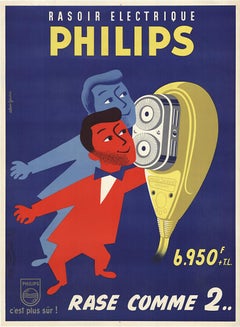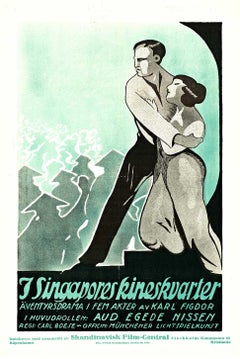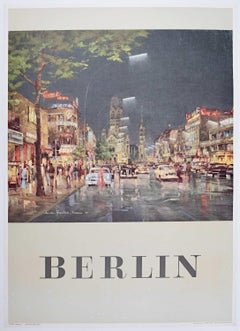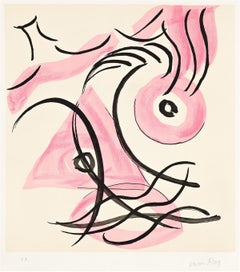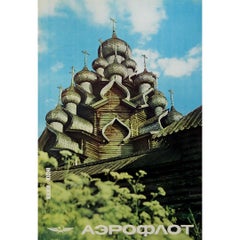Lithograph More Prints
to
602
982
589
869
307
197
Overall Width
to
Overall Height
to
651
469
334
314
95
73
56
41
19
14
7
3
1
1
163
113
82
81
47
1
226
2,394
323
26
46
45
89
153
240
491
570
214
117
1
2,148
733
51
106
76
72
60
37
35
33
31
29
19
17
16
14
11
6
6
6
5
5
5
2,944
2,041
1,191
1,163
1,156
314
640
1,409
1,155
Medium: Lithograph
Philips Rasoir Electrique Original Vintage French advertising poster
Located in Spokane, WA
Original vintage poster Philips Rasoir Electrique. Archival linen backed for preservation and framing. Large format French antique poster. ...
Category
Late 20th Century Modern Lithograph More Prints
Materials
Lithograph
Original “In Singapore’s Chinese Quarter” Swedish silent movie poster, on linen
Located in Spokane, WA
Original vintage Swedish movie poster, 1921 lithograph. Step back into the glamour and intrigue of early 1920s cinema with this **original Swedish movie poster** for *I Singapores ki...
Category
1920s Art Deco Lithograph More Prints
Materials
Lithograph
Berlin 1955 Poster Kurfürstendamm Berlin Night Kaiser Wilhelm Gedächtniskirche
Located in London, GB
To see our other original vintage travel posters, scroll down to "More from this Seller" and below it click on "See all from this Seller" - or send us a message if you cannot find the poster you want.
Berlin - Kaiser Wilhelm...
Category
1950s Modern Lithograph More Prints
Materials
Lithograph
De l'Origine des Espèces par Voie de Sélection Irrationelle: Visage
By Man Ray
Located in New York, NY
A very good impression of this color lithograph. Artist's proof, aside from the edition of 180. Signed and inscribed "EA" in pencil. Printed by Mourlot, Paris. Published by Leon Amie...
Category
1970s Surrealist Lithograph More Prints
Materials
Color, Lithograph
Original Soviet travel poster - Aeroflot Kizhi (Kiji)
Located in PARIS, FR
This evocative original Soviet travel poster celebrates one of Russia’s most breathtaking cultural treasures: the wooden Church of the Transfiguration on Kizhi Island, a UNESCO World...
Category
1970s Lithograph More Prints
Materials
Paper, Lithograph
1942 Royal Air Force Bristol Beaufighter aeroplane recognition poster World War
Located in London, GB
To see our other original vintage propaganda posters, scroll down to "More from this Seller" and below it click on "See all from this Seller" - or send us a message if you cannot fin...
Category
1940s Modern Lithograph More Prints
Materials
Lithograph
Hand-signed "Taxi Pretzel" lithograph from 1971 "No Gas" portfolio by Red Grooms
By Red Grooms
Located in Boca Raton, FL
"Taxi Pretzel" lithograph by Red Grooms from 1971 "No Gas" portfolio. Hand-signed Red Grooms AP on bottom of shoe on lower right corner. Image size: 27 1/4 x 21 1/2 inches.
Category
1970s Contemporary Lithograph More Prints
Materials
Lithograph
Jean Cocteau - Portrait - Original Lithograph
By Jean Cocteau
Located in Collonge Bellerive, Geneve, CH
Original Lithograph by Jean Cocteau
Title: Taureaux
Signed in the plate
Dimensions: 40 x 30 cm
Edition: 200
Luxury print edition from the portfolio of Trinckvel
1965
From the last po...
Category
1960s Modern Lithograph More Prints
Materials
Lithograph
1943 Grumman F6F Hellcat World War 2 aeroplane warbird poster pub. US Navy
Located in London, GB
To see our other original vintage propaganda posters, scroll down to "More from this Seller" and below it click on "See all from this Seller" - or send us a message if you cannot find the poster you want.
US Naval Aviation Training Division
Grumman F6F Hellcat...
Category
1940s Modern Lithograph More Prints
Materials
Lithograph
Hotel Finlandia Punkaharju Suomi Finland Original Vintage Luggage Label
Located in London, GB
To see our other original vintage travel posters, scroll down to "More from this Seller" and below it click on "See all from this Seller" - or send us a message if you cannot find the poster you want.
Hotel Finlandia Punkaharju Suomi Finland...
Category
Mid-20th Century Modern Lithograph More Prints
Materials
Lithograph
Western Pals
By Red Grooms
Located in Lyons, CO
Color lithograph, Edition 40.
Red Grooms is a painter, sculptor, printmaker, filmmaker, and showman par excellence. His major installations, “Ruckus Manhattan”, “The City of Chicago...
Category
1990s Contemporary Lithograph More Prints
Materials
Lithograph
Alberto Magnelli - Composition - Original Lithograph
Located in Collonge Bellerive, Geneve, CH
Alberto Magnelli
Original Lithograph
Executed in 1967 for XXe Siecle (issue No. 29 "Vers un nouvel humanism")
published in Paris by San Lazzaro
There is a fold in the center, as issu...
Category
1960s Abstract Geometric Lithograph More Prints
Materials
Lithograph
Original Vienna Austria Photographic Travel Poster Eglise des Freres Mineurs
Located in London, GB
To see our other original vintage travel posters, many of which are from Austria, scroll down to "More from this Seller" and below it click on "See all from this Seller" - or send us a message if you cannot find the poster you want.
Anton Tusch (photographer)
Eglise des Freres...
Category
1950s Photorealist Lithograph More Prints
Materials
Lithograph
London Transport 1935 Poster Early in the Month Clifford and Rosemary Ellis
Located in London, GB
To see our other original vintage travel posters including more pre-war London Transport posters, scroll down to "More from this Seller" and below it click on "See all from this Seller" - or send us a message if you cannot find the poster you want.
Clifford and Rosemary Ellis...
Category
1930s Modern Lithograph More Prints
Materials
Lithograph
Deluvium
Located in Lyons, CO
Lithograph/diptych. Edition 25.
Miho Morinoue is an acclaimed dancer and a visual artist. As a member of the Complexions Contemporary Ballet Company she performed extensively in the...
Category
2010s Contemporary Lithograph More Prints
Materials
Lithograph
" I am a Ninja" Pop Art Portrait in Amsterdam by Shao Qi
Located in Pasadena, CA
In the infinitely complex world of contemporary art, many works serve as vehicles for thought, postural statements, and emotion. Such is the case with SHAO QI, a renowned Chinese artist who skillfully blends the political, cultural, and aesthetic in her lithographic work entitled "I am a Ninja."
This piece, limited to thirty copies, numbered 21/30 in pencil and dated 2011, is a perfect example of how cross-influences can be integrated and cultural barriers broken down.
Historically, ninjas were inferior warriors in feudal Japan, often recruited by samurai and governments to serve as spies. Their mysteriousness has allowed them to infiltrate contemporary popular culture, so much so that their ubiquity eventually transcends borders, internationalizing the ninja and rendering its Japanese origin a simple detail, among others, in public perception, a component of a character that has become universal.
Pop art, an artistic movement of the second half of the 20th century, is known for its appropriation and subversion of consumer products and cultural icons. By hijacking elements of mass culture, pop artists such as Andy Warhol and Roy Lichtenstein transformed the perception of art and its eligible subjects. The use of a ninja silhouette in "I Am a Ninja" follows this tradition, exploiting a popular symbol to reimagine it.
The dynamic interplay of colors, in particular the aesthetic power of red and black, is essential. Red's radiant luminescence contrasts sharply with black's ultimate absorption, framing the work in a colorimetric face-off reminiscent of the propaganda posters of yesteryear. Red, the color of revolution, power, passion, and vitality, blends with black, shadow, and emptiness.
The bold black lines that delineate the figure are reminiscent of Shepard Fairey's work under the OBEY signature. These lines convey a vibrant, primitive force akin to Russian Constructivist posters...
Category
2010s Pop Art Lithograph More Prints
Materials
Lithograph
$490 Sale Price
62% Off
Hand-signed and numbered "Rat" lithograph from "No Gas Portfolio" by Red Grooms
By Red Grooms
Located in Boca Raton, FL
"Rat" lithograph from 1971 "No Gas" portfolio by Red Grooms. Hand-signed AP Red Grooms inside blue of Clorox bottle on front lower right. Image size: 22 x 27 1/2 inches. Depicts a N...
Category
1970s Contemporary Lithograph More Prints
Materials
Lithograph
Leo Vernon West Africa poster map 1948 Nigeria, Gold Coast, Sierra Leone, Gambia
By Leo Vernon
Located in London, GB
To see our other original vintage travel posters, scroll down to "More from this Seller" and below it click on "See all from this Seller" - or send us a message if you cannot find th...
Category
1940s Realist Lithograph More Prints
Materials
Lithograph
5 Cuentos de Meido Perto Rican poster
Located in Wilton Manors, FL
LORENZO HOMAR (1913-2004) LEA EL LIBRO / 5 CUENTOS DE MIEDO. 1953.
30 1/2x17 3/4 inches, 77 1/2x45 cm.
Silkscreen. Paper.
5 Cuentos de Miedo (5 Tales of Fear), a book from the ser...
Category
Mid-20th Century Abstract Lithograph More Prints
Materials
Lithograph
Obsidian
Located in Lyons, CO
Color lithograph, Edition 30
Kushner has collaborated with Master printer Bud Shark since 1982 on various monotypes and lithographs. These exuberant, sensuous prints often include...
Category
21st Century and Contemporary Contemporary Lithograph More Prints
Materials
Lithograph
Original GREECE - Apollo - Olympia vintage 1956 first printing vintage poster
Located in Spokane, WA
Original travel poster: GREECE - OLYMPIA APOLLO, original vintage European travel poster. Size 23 3/8" x 31 3/8". Archival linen backed in very good condition; ready to frame. ...
Category
1950s American Modern Lithograph More Prints
Materials
Lithograph
Framed Limited Edition Lithograph. "Fish Market" by Altman, Hand Signed.
Located in Chesterfield, MI
Limited edition etching on Arches paper by artist Harold Altman. Although title on the piece is unknown, there is a hand signature from Altman. The framed piece is in stunning condit...
Category
20th Century American Impressionist Lithograph More Prints
Materials
Etching, Lithograph
$770 Sale Price
30% Off
CAY RUNNER Signed Lithograph, Realistic Runner Boat on Calm Water, Marine Art
By John Lutes
Located in Union City, NJ
Artist - John Lutes (1926-2001)
Title - Cay Runner
Medium - Lithograph
Year Published - 1980
Print Size - 29 x 22 in.
Printer - J K Fine Art Editions Co., NY
Cay Runner is an original hand drawn, limited edition lithograph, (not a photographically reproduced or digital print) by the American artist John D. Lutes created using traditional hand lithography techniques, proofed and printed in multiple colors on archival Arches paper 100% acid free.
Cay Runner depicts a very detailed realistic rendition of a runner boat in still water, a solid light khaki grey sky serving as the backdrop for this quiet marine boat portrait. This is a rare limited edition lithograph by Mr. Lutes not often seen on the marketplace. Cay Runner is in excellent condition, unframed, pencil signed by John Lutes.
Print size - 30 x 22 inches, unframed, excellent condition, hand signed in pencil by John Lutes
Edition size - 300, plus proofs
Year published - 1980
Printer - J K Fine Art Editions Co. NY
John D. Lutes, born 1926 in Chicago, died 2001...
Category
1980s Realist Lithograph More Prints
Materials
Lithograph
Floater
By Don Ed Hardy
Located in Lyons, CO
Color lithograph, Edition 20.
Don Ed Hardy’s lithographs, created in the spring of 2007, continue the “look” of his Ghost Writer painting series which has been developed over the past five years. They are evocative of ancient Chinese stone rubbings, or x-rays. Both prints refer to earlier images from Japanese art history.
Floater, a meditating skeleton poised above surging waves, was done from memory after a 19th century Japanese painting...
Category
Early 2000s Contemporary Lithograph More Prints
Materials
Lithograph
The Preacher
Located in New York, NY
A very good impression of this scarce lithograph on Arches buff paper. Signed, dated and numbered 17/60 in pencil by de Kooning. Printed by Hollander's Workshop, Inc., New York. Co-p...
Category
1970s Abstract Expressionist Lithograph More Prints
Materials
Lithograph
Grey Selenite Eroded Antinous as Bacchus, 2020 Produced by Perrotin, Offset
Located in Draper, UT
Daniel Arsham
Grey Selenite Eroded Antinous as Bacchus, 2020
Signed and Numbered poster (offset print), produced 2021
In Grey Selenite Eroded Antinous as Bacchus, Daniel Arsham rei...
Category
2010s Contemporary Lithograph More Prints
Materials
Lithograph
Original Cote de Atlantiques - Chemins de fer Francais vintage travel poster
Located in Spokane, WA
Côte de l’Atlantique, Chemins de fer Français vintage SNCF travel poster - Gaston Larrieu, 1971.
Original Authentic Vintage Travel Poster — Linen-Backed. Very good condition, ready ...
Category
1970s American Modern Lithograph More Prints
Materials
Lithograph
Dogman and Indian
Located in Lyons, CO
Hand colored lithograph/painted frame, Edition30
Roy De Forest was one of the preeminent artists of the California Bay area. Usually associated with the "Funk" art movement, De Forest, with appealing irreverence, mades paintings, drawings and sculpture of a wild world of weird humans and amazing beady-eyed dogs.
De Forest made three prints at Shark's; his first a woodcut, "Van Gogh in the Tropics" in 1999, "Ode to Rin Tin Tin...
Category
21st Century and Contemporary Contemporary Lithograph More Prints
Materials
Lithograph
Jean Cocteau - Profile - Original Lithograph
By Jean Cocteau
Located in Collonge Bellerive, Geneve, CH
Original Lithograph by Jean Cocteau
Title: Taureaux
Signed in the plate
Dimensions: 40 x 30 cm
Edition: 200
Luxury print edition from the portfolio of Trinckvel
1965
Jean Cocteau
W...
Category
1960s Modern Lithograph More Prints
Materials
Lithograph
Decorative Motifs of the Egyptian Renaissance - Chromolithograph - 20th Century
Located in Roma, IT
Decorative Motifs of the Egyptian Renaissance is a vintage chromolithograph realized by an anonymous artist in the early 20th Century.
Good conditions.
The artwork represents Decor...
Category
Early 20th Century Lithograph More Prints
Materials
Paper, Lithograph
As the Moon Rises
By Susan Hall
Located in Lyons, CO
Color lithograph with pochoir, Edition25
Susan Hall lived and worked for many years in New York City before returning to her childhood home in Point Reyes Station, California. She depicts moments suspended in the mysterious light of this place of marshland, wave-broken coast line and tawny, rolling hills.
In Susan's latest prints Solitary Oak and As the Moon Rises...
Category
21st Century and Contemporary Contemporary Lithograph More Prints
Materials
Lithograph
'Tom, Dick & Harry', Paris, Salon d'Automne, Art Deco, Woman Artist, ASL, AIC
By Nura Ulreich
Located in Santa Cruz, CA
A fresh, hand-colored stone lithograph titled 'Tom, Dick and Harry' by Nura Woodson Ulreich (American, 1899-1950), created in 1943 and stamped with certification of authenticity vers...
Category
1940s Lithograph More Prints
Materials
Paper, Lithograph
Still Life with Fish and jugs
Located in San Francisco, CA
This artwork titled "Still Life with Fish and Jugs" 1966, is an original colors lithograph on Japan nacre paper by renown Russian artist Mihail Chemiakin, b.1943. It is hand signed a...
Category
Late 20th Century Modern Lithograph More Prints
Materials
Lithograph
Joan Miro - Peacock Feathers - Original Lithograph
By Joan Miró
Located in Collonge Bellerive, Geneve, CH
Joan Miro - Peacock Feathers - Original Lithograph
Artist: Joan Miro
Dimensions: 9 x 14-/12 inches (sheet), with the usual centerfold, as published in "Joan Miro" by Jacques Prevert ...
Category
1950s Abstract Lithograph More Prints
Materials
Lithograph
Paul Jenkins - Composition - Original Lithograph
By Paul Jenkins
Located in Collonge Bellerive, Geneve, CH
Paul Jenkins - Composition - Original Lithograph
1964
Dimensions: 30 x 20 cm
Edition of 200 (one of the 200 on Vélin de Rives)
Mourlot Press, 1964
Paul Jenkins, American (1923 - 2012)
Paul Jenkins, an artist originally associated with abstract expressionism, exhibits in his mature works a redefining of color, light and space on the canvas surface.
Born in Kansas City, Missouri in 1923, Jenkins worked as a teenager in a ceramics factory, where he was first exposed to color intensity and the creation of form. From age 14 to 18, he studied drawing and painting at the city's Art Institute.
Initially interested in drama, Jenkins received a fellowship to the Cleveland Playhouse, then continued his dramatic studies in Pittsburgh at the Drama School of the Carnegie Institute of Technology.
Deciding to become an artist, Jenkins moved to New York City in 1948 and studied at the Art Students League. During Jenkins's three years at the League, Yasuo Kuniyoshi and Morris Kantor were his influential instructors.
While Jenkins continued to live and paint in New York City, his personal explorations took a metaphysical turn, which would ultimately become dominant in his work.
P.D. Ouspensky's The Search of the Miracu/ous changed the artist's thoughts on human growth and limitations, while the Chinese I Ching, through its thematic emphasis on constant change, heightened his interest in flowing paint on canvas. Painting for Jenkins became an intuitive, almost mystical process. He commented, "I paint what God is to me."
In 1953, Jenkins traveled to Paris, where, a year later, he had his first one-man show. While working at the American Artists Center, he continued to experiment with flowing paints, pouring pigment in streams of various thicknesses, with white thin spills as linear overlays.
Jenkins's intent was to deny stasis and create a literal and metaphysical sense of dynamism, while maintaining a sense of unity. Beginning in 1958, Jenkins titled each canvas Phenomena, with additional identifying words. He believed the work to be descriptive of the discovery process inherent in each painting.
Paralleling his beliefs, the artist's paintings have undergone subtle but definite changes. Beginning in the early 1 960s, a shift of color saturation and exposure of the white areas gave Jenkins's canvases an enhanced feeling of illumination.
If Jenkins's technique is unorthodox, he is in many other ways a traditional artist. He works in an acrylic medium on traditional linen canvas or fine rag paper. Often he uses an ivory knife...
Category
1960s Modern Lithograph More Prints
Materials
Lithograph
Untitled
Located in Barcelona, BARCELONA
The painting is being offered with a work and authenticity certificate
Category
1990s Abstract Expressionist Lithograph More Prints
Materials
Lithograph
Tout se Tient - Lithograph by Roberto Sebastian Matta - 1975
Located in Roma, IT
T'ou't se tient is an Artwork realized in 1975 by Roberto Sebastián Antonio Matta Echaurren (Santiago, Chile, 1911 - Civitavecchia, Italy, 2002).
Colored Litograph on paper.Realize...
Category
1970s Surrealist Lithograph More Prints
Materials
Lithograph
Hand-signed "Local" lithograph by Red Grooms from the 1971 "No Gas" portfolio
By Red Grooms
Located in Boca Raton, FL
"Local" lithograph by Red Grooms from the 1971 "No Gas" portfolio. Hand-signed AP Red Grooms in policeman's left shoe in bottom lower right of image. Depicts people on subway.
Category
1970s Contemporary Lithograph More Prints
Materials
Lithograph
United Nations Peacekeeping Operations
By Joan Miró
Located in Washington, DC
Artist: Joan MIro
Title: United Nations Peacekeeping Operations
Medium: Lithograph in colors
Date: 1980
Edition: 683/1500
Framed Size: 18 3/4" x 16 1/4"
Sheet Size: 11" x 8 1/2"
Ima...
Category
1970s Pop Art Lithograph More Prints
Materials
Lithograph
Ambassadeurs - Aristide Bruant (after) Henri de Toulouse-Lautrec, 1966
Located in New York, NY
This lithographic poster illustrates Aristide Bruant who was a famous performer and cabaret owner in Paris at the turn of the 20th century. Lautrec, seizing on Bruant's trademark cos...
Category
Late 19th Century Post-Impressionist Lithograph More Prints
Materials
Lithograph
ROSE QUARTZ ERODED BUST OF ROME DIVINISÉE, 2020 Produced by Perrotin, Offset
Located in Draper, UT
Daniel Arsham
Rose Quartz Eroded Bust of Rome, Divinisée, 2020
Signed and Numbered (84/150) poster (offset print), published 2021
Daniel Arsham’s Rose Quartz Eroded Bust of Rome, D...
Category
2010s Contemporary Lithograph More Prints
Materials
Lithograph
Le Clocher de St. Nicolas
Located in New York, NY
A very good impression of this scarce lithograph on wove paper. , Printed by Lemercier & Cie, Paris and published by Alfred Robaud. From "Douze Croquis et Dessins Originaux."
Catalo...
Category
1870s Realist Lithograph More Prints
Materials
Lithograph
Winter Jasmine, English antique yellow flower botanical chromolithograph, 1895
By Frederick William Hulme
Located in Melbourne, Victoria
'Winter Jasmine'
Process print from Frederick William Hulme’s ‘Familiar Wild Flowers’, circa 1890.
Hulme was known as a teacher and an amateu...
Category
Late 19th Century Naturalistic Lithograph More Prints
Materials
Lithograph
The Last Dynasty: Empress
Located in Lyons, CO
Color lithograph, Edition 30.
Known for paintings based on historical Chinese photographs, Hung Liu's subjects over the years have been prostitutes, refugees, street performers, s...
Category
21st Century and Contemporary Contemporary Lithograph More Prints
Materials
Lithograph
Book of Moses, Signed Lithograph, Jewish Symbolism, Deep Red, Black
By Moshe Castel
Located in Union City, NJ
Book of Moses by the Israeli artist Moshe Castel (1909-1991) is a limited edition lithograph printed in 14 colors using traditional lithographic techniques on archival Somerset paper...
Category
1980s Contemporary Lithograph More Prints
Materials
Lithograph
Original Hjärtats Begär (Mistress of Shenstone), 1921 Swedish silent movie
Located in Spokane, WA
Original Swedish movie poster: Hjärtats Begär, a.k.a. The Mistress of Shenstone and a.k.a The Heart's Desire. Archival linen backed in Grade A condition, printed in 1921. No damage...
Category
1920s Art Deco Lithograph More Prints
Materials
Lithograph
German Renaissance - Lithograph - 19th Century
Located in Roma, IT
German Renaissance is an artwork realized in 19th century.
Lithograph on paper.
The artwork represents decorative book binding of German Renaissance. The artwork is depicted skillf...
Category
1970s Surrealist Lithograph More Prints
Materials
Lithograph
Yoshitomo Nara and Hiroshi Sugito, Untitled (Omaha) - Signed Print, Contemporary
Located in Hamburg, DE
Yoshitomo Nara (b. 1959, Japanese) and Hiroshi Sugito (b. 1970, Japanese)
Untitled (Omaha), 2005
Medium: Lithograph on paper
Dimensions: 53.5 x 62.5 cm
Edition of 100 + 10 AP: Hand-s...
Category
21st Century and Contemporary Contemporary Lithograph More Prints
Materials
Lithograph
"Homage to Nureyev" large lithograph
Located in San Francisco, CA
This artwork titled "Homage to Nureyev" c.1993, is an original colors lithograph on wove paper by renown Russian artist Mihail Chemiakin, b.1943. It is hand signed and numbered 48/17...
Category
Late 20th Century Modern Lithograph More Prints
Materials
Lithograph
Philip (Knighting of Sir Galahad)
Located in Washington, DC
Artist: Salvador Dali
Title: Philip (Knighting of Sir Galahad)
Portfolio: 1972 The Twelve Apostles (Knights of the Round Table)
Medium: Lithograph
Year: 1972
Edition: 38/350
Frame Si...
Category
1970s Surrealist Lithograph More Prints
Materials
Lithograph
Mick Jagger X - Andy Warhol, Announcement card, Rolling Stones, Musician, Pop
Located in Knowle Lane, Cranleigh
Mick Jagger X - After Andy Warhol. This black and white colour scheme lithographic print features - Mick Jagger - an iconic rock legend who was the frontman and one of the founders ...
Category
1970s Pop Art Lithograph More Prints
Materials
Lithograph
River Crabs (from Papercut Portfolio)
By Ai Weiwei
Located in Calabasas, CA
Artist: Ai Weiwei
Title: River Crabs (from Papercut Portfolio)
Year: 2019
Medium: Papercut on large format, colored fine art paper
Edition: 250; sig...
Category
2010s Contemporary Lithograph More Prints
Materials
Lithograph
Jean Cocteau - Portrait - Original Lithograph
By Jean Cocteau
Located in Collonge Bellerive, Geneve, CH
Original Lithograph by Jean Cocteau
Title: Taureaux
Signed in the plate
Dimensions: 40 x 30 cm
Edition: 200
Luxury print edition from the portfolio of Trinckvel
1965
Jean Cocteau
W...
Category
1960s Modern Lithograph More Prints
Materials
Lithograph
Joan Miro (Plate 7)
By Joan Miró
Located in Washington, DC
Artist: Joan Miro
Title: Joan Miro (Plate 7)
Portfolio: Joan Miro
Medium: Lithograph
Date: 1956
Edition: Unnumbered
Frame Size: 15 1/4" x 21 1/2"
Sheet Size: 9" x 15"
Signature: Unsi...
Category
1950s Modern Lithograph More Prints
Materials
Lithograph
Jeu de la Cape (III), from A Los Toros Avec Picasso
Located in Washington, DC
Artist: Pablo Picasso
Title: Jeu de la Cape (III)
Portfolio: A Los Toros Avec Picasso
Medium: Transfer lithograph
Date: 1961
Edition: Unnumbered
Frame Size: 18 1/4" x 20 3/4"
Sheet S...
Category
1960s Abstract Lithograph More Prints
Materials
Lithograph
Aboriginal Child Frightened by Abstraction and Time
Located in Lyons, CO
Color lithograph with chine collé, Edition 30.
William Wiley uses current political and social issues to comment on life in our time. His stunning draftsmanship, and freeform lov...
Category
1990s Contemporary Lithograph More Prints
Materials
Lithograph
Le Corbusier: "Le Poème de L'Angle Droit". Original lithograph.
By Le Corbusier
Located in Richmond, GB
Charles-Éduard Jeanneret, known as Le Corbusier, was a Swiss architect and designer who is generally regarded as a key figure in the development of modern architecture, his work bein...
Category
Mid-20th Century Modern Lithograph More Prints
Materials
Lithograph
Untitled
Located in London, GB
Robert Motherwell
Untitled
1986
Colour lithograph and collage, on Guarro paper, Edtion of 100
55.9 x 37.8 cms (22 x 14 7/8 ins)
Category
1980s Abstract Expressionist Lithograph More Prints
Materials
Lithograph
Original Antique French Poster, "Hunting w Hounds", Albert Guillaume, Lithograph
Located in Dallas, TX
artist: Albert Guillaume Size: 26 x 103. Year: 1900's. Archival linen backed in great condition; ready to frame.
The posters of the artist Albert André Guillaume are still today tr...
Category
Early 1900s Art Nouveau Lithograph More Prints
Materials
Lithograph
Untitled
By Sam Francis
Located in New York, NY
A very good impression of this scarce color lithograph on Rives BFK. Signed and numbered 13/50 in pencil by Francis. Published by Editions Daniel Papierski, Paris. From "Papierski Po...
Category
1990s Abstract Expressionist Lithograph More Prints
Materials
Color, Lithograph
Lithograph more prints for sale on 1stDibs.
Find a wide variety of authentic Lithograph more prints available on 1stDibs. While artists have worked in this medium across a range of time periods, art made with this material during the 21st Century is especially popular. If you’re looking to add more prints created with this material to introduce a provocative pop of color and texture to an otherwise neutral space in your home, the works available on 1stDibs include elements of blue, orange, purple, yellow and other colors. There are many well-known artists whose body of work includes ceramic sculptures. Popular artists on 1stDibs associated with pieces like this include David Shrigley, Jean Cocteau, Marc Chagall, and David Roberts. Frequently made by artists working in the Contemporary, Modern, all of these pieces for sale are unique and many will draw the attention of guests in your home. Not every interior allows for large Lithograph more prints, so small editions measuring 0.04 inches across are also available Prices for more prints made by famous or emerging artists can differ depending on medium, time period and other attributes. On 1stDibs, the price for these items starts at $44 and tops out at $225,000, while the average work can sell for $956.
Recently Viewed
View AllMore Ways To Browse
Ewan David Eason
Florida Vintage Travel Posters
Goodyear Poster
Gustav Klutsis
Ihap Hulusi
Ivan Navarro
James B Painter
James Bond Movie Posters
Jan V Roy Posters
John Lennon On Sale
Lait Pur Sterilize
Lake District Vintage Travel Poster
Land Rover Poster
Le Frou Frou Vintage Poster
Leon De Pas
Leon Wuidar
Lillian Snelling
Man Ray Electro Magie
